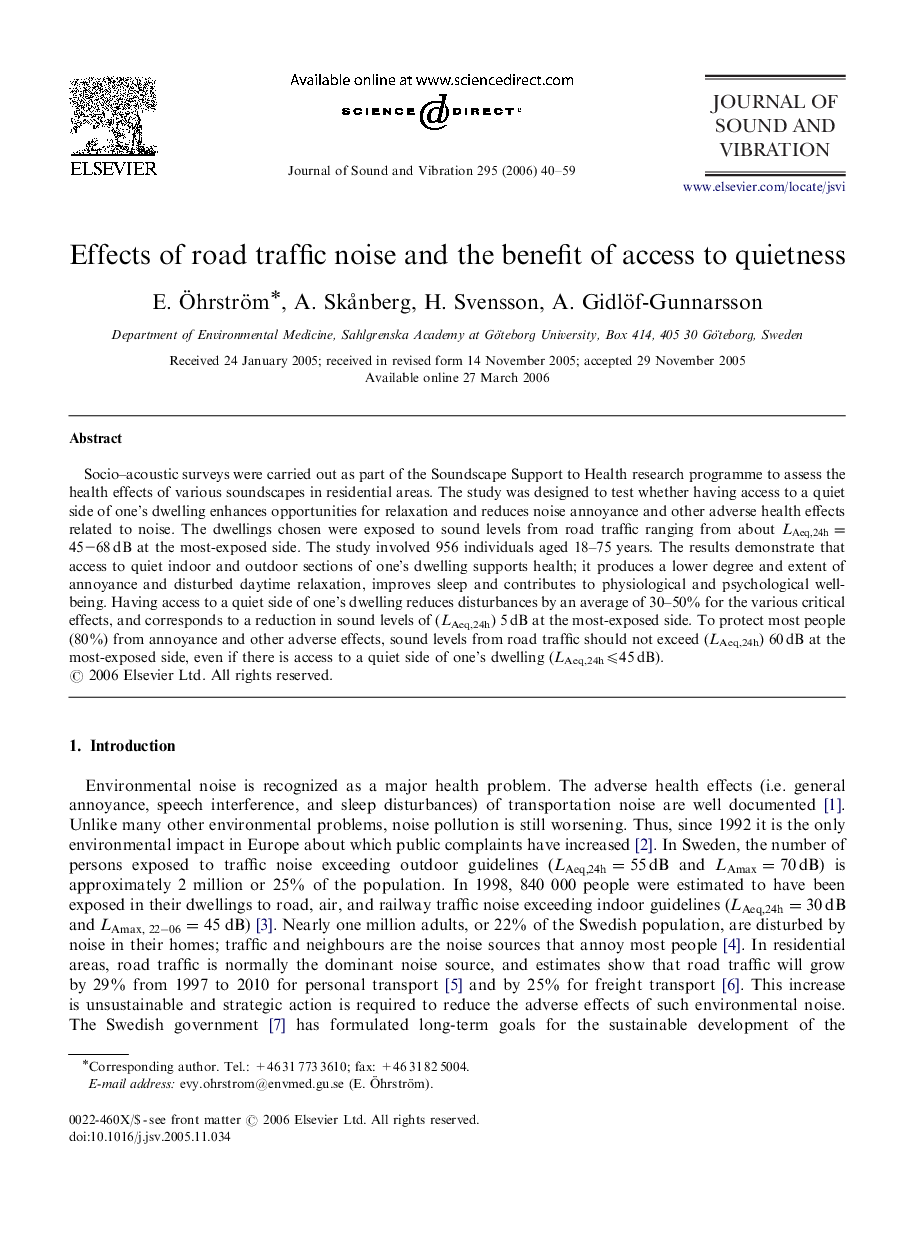| Article ID | Journal | Published Year | Pages | File Type |
|---|---|---|---|---|
| 292307 | Journal of Sound and Vibration | 2006 | 20 Pages |
Socio–acoustic surveys were carried out as part of the Soundscape Support to Health research programme to assess the health effects of various soundscapes in residential areas. The study was designed to test whether having access to a quiet side of one's dwelling enhances opportunities for relaxation and reduces noise annoyance and other adverse health effects related to noise. The dwellings chosen were exposed to sound levels from road traffic ranging from about LAeq,24h=45–68dB at the most-exposed side. The study involved 956 individuals aged 18–75 years. The results demonstrate that access to quiet indoor and outdoor sections of one's dwelling supports health; it produces a lower degree and extent of annoyance and disturbed daytime relaxation, improves sleep and contributes to physiological and psychological well-being. Having access to a quiet side of one's dwelling reduces disturbances by an average of 30–50% for the various critical effects, and corresponds to a reduction in sound levels of (LAeq,24h) 5 dB at the most-exposed side. To protect most people (80%) from annoyance and other adverse effects, sound levels from road traffic should not exceed (LAeq,24h) 60 dB at the most-exposed side, even if there is access to a quiet side of one's dwelling (LAeq,24h⩽45 dB).
